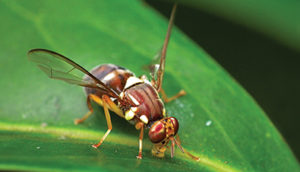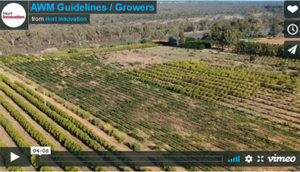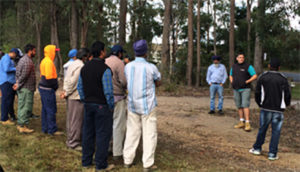Read the latest information on
Foot-and-mouth disease

Queensland fruit fly. Image: James Niland, Wikimedia commons
Area-wide management (AWM) is a proven way of managing pests, including Queensland fruit fly, the single most important pest of fruits and vegetables in Australia.
A set of guidelines has been developed by Hort Frontiers to help you get started with AWM for Queensland fruit fly, and the opportunities to use sterile insect technique (SIT) once pest numbers are down and sterile flies become available for purchase*.
If you are commercial grower and want to know what more you could be doing to reduce your Queensland fruit fly problem, then these guidelines are for you.
 There’s a four minute video on the steps used to help reduce Queensland fruit fly numbers, to then make it possible to use sterile insect technique as a control measure. You can watch the short video for an overview and then click on the links on the left of the video page to find out more information about each step.
There’s a four minute video on the steps used to help reduce Queensland fruit fly numbers, to then make it possible to use sterile insect technique as a control measure. You can watch the short video for an overview and then click on the links on the left of the video page to find out more information about each step.
By working with other growers and the community around you using an AWM approach, you could have fewer flies than by simply using best management practices on-farm. This is particularly important in a landscape where flies may be coming from multiple sources throughout the year beyond your crop.
For a commercial grower, in general the steps are:

Start a wider conversation with people in your community, and encourage them to join in. Image: Hort Innovation
– to get a larger group involved, start a wider conversation with people in your community, and encourage them to join in.
Click here to see the guidelines on how growers can contribute to area wide management programs.
There’s also a section for coordinators, with guidelines on how to coordinate the area-wide management of Queensland fruit fly between growers and communities.
*Note: SIT for Queensland fruit fly is still in the pilot stage with sterile flies not yet available for commercial purchase. For further information on fly availability please contact the SITplus Program Coordinator at dan.ryan@sitplus.com.au
Acknowledgement: information sourced from projects funded by Hort Frontiers Fruit Fly Fund, part of the Hort Frontiers strategic partnership initiative developed by Hort Innovation, with co-investment from various partners and contributions from the Australian Government.